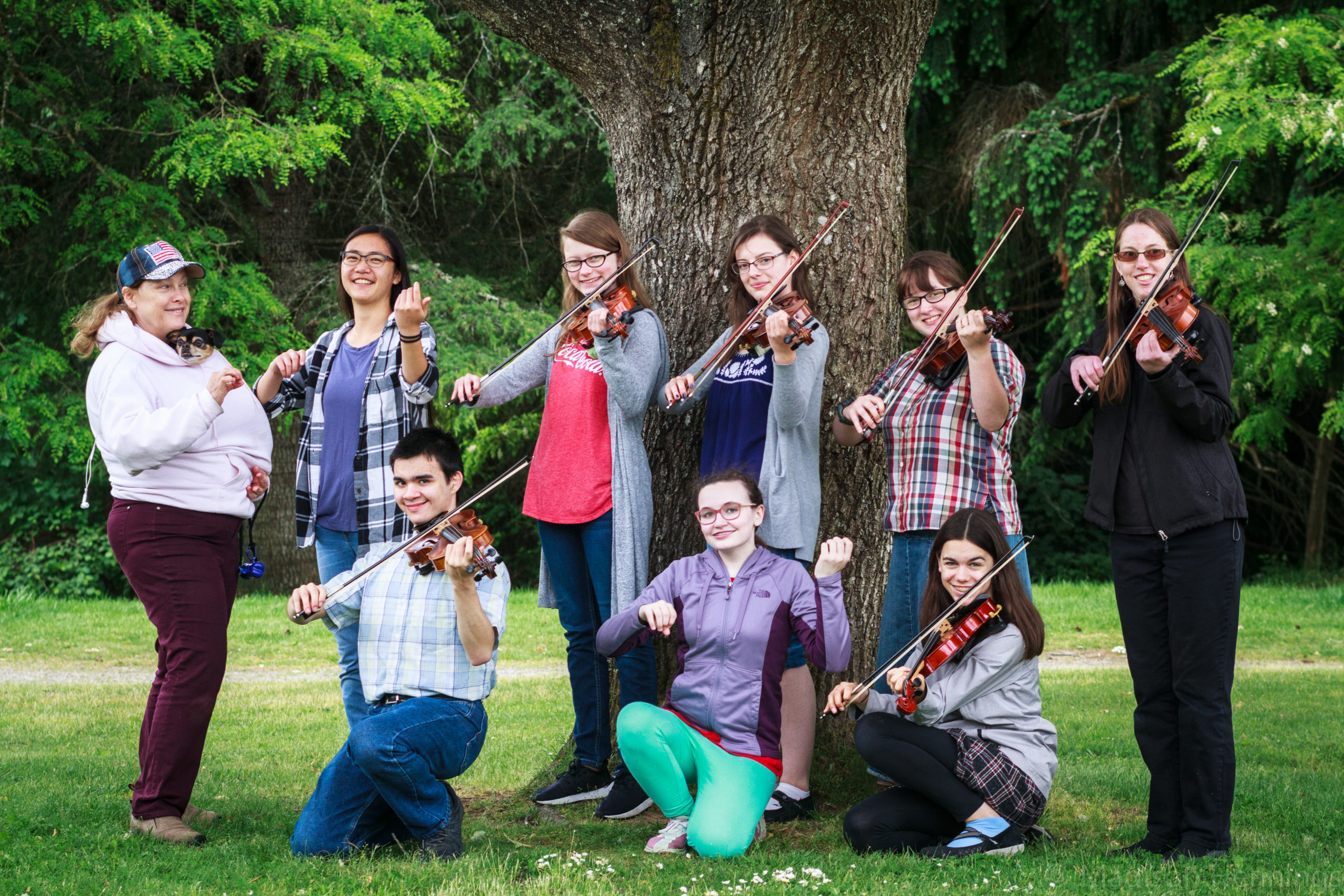Each class level focuses on developing it's own set of skills, knowledge, and musical ability. Since each class builds upon the next, it is important to know all of the skills in one level before moving on to the next!
Our teaches teach toward these skill levels, based on the Washington State Music Teachers Association standards plus additional skills required by Home School Strings. These skills are tested through the Music Literacy Program portion of the KMTA Carnival in April. Parents will receive a report detailing the skills mastered and appropriate class placement for the following year.
Our desire is to see you take steps toward getting closer to your goals. Please take some time to review the list and set goals for your future here at HSS and beyond. Daily practice and attentive attitudes will help you in your musical endeavors.
Note names:
Finger patterns:
Posture:
Rhythm:
Scales and arpeggios (say key signature):
Written theory:
Sight reading: Play example using WSMTA guidelines
Listening:
Performance:
Beginning students who have passed Level 1
Skills taught and required to promote to Level 3:
Note names:
Finger patterns:
Posture:
Rhythm: Clap ¼, ½ , dotted ½ , dotted ¼, dotted 1/8, whole notes and rests
Scales and arpeggios (say key signature):
Written theory:
Sight reading:
Listening:
Performance:
Students who have completed ‘Level 1’ and ‘Level 2’
Skills taught and required to promote to 'Level 4':
Note names:
Finger patterns:
Posture/Bowing:
Rhythm:
Scales and arpeggios (say key signature):
Written theory:
Sight reading:
Listening:
Performance:
Students who have passed 'Level 3'.
Skills taught and required to promote to 'Level 5':
Positions:
Bowings:
Dynamic markings: Follow dynamic markings in playing
Intonation:
Rhythm:
Scales and arpeggios – all 2 octaves (say key signature):
Written theory:
Sight reading:
Listening:
Performance:
TBD
Students in the 'Advanced' class are invited to audition for this community performance ensemble. Students should expect to have performances on a few weekends throughout the year. Students who are absent from two or more rehearsals during a quarter may be excused by the instructor from the upcoming performance.
To audition, students must prepare a 3-octave major scale and a 3-octave minor scale, perform clapping tests, and perform a piece from the Advanced repertoire, or another piece at an advanced level. In addition, he/she will be asked to sight read a short selection.
When possible a fiddle ensemble will be formed. Violin, guitar, mandolin, banjo, bass, cello and ukulele players are welcome! Violin students must be enrolled in Intermediate B or Advanced. Students may also join by a simple audition.
Updated August 2021
